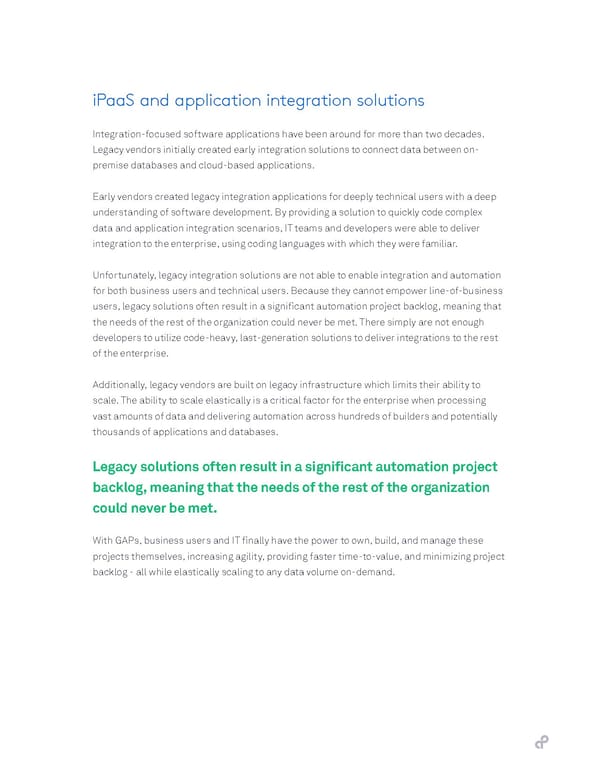iPaaS and application integration solutions Integration-focused software applications have been around for more than two decades. Legacy vendors initially created early integration solutions to connect data between on- premise databases and cloud-based applications. Early vendors created legacy integration applications for deeply technical users with a deep understanding of software development. By providing a solution to quickly code complex data and application integration scenarios, IT teams and developers were able to deliver integration to the enterprise, using coding languages with which they were familiar. Unfortunately, legacy integration solutions are not able to enable integration and automation for both business users and technical users. Because they cannot empower line-of-business users, legacy solutions often result in a significant automation project backlog, meaning that the needs of the rest of the organization could never be met. There simply are not enough developers to utilize code-heavy, last-generation solutions to deliver integrations to the rest of the enterprise. Additionally, legacy vendors are built on legacy infrastructure which limits their ability to scale. The ability to scale elastically is a critical factor for the enterprise when processing vast amounts of data and delivering automation across hundreds of builders and potentially thousands of applications and databases. Legacy solutions often result in a significant automation project backlog, meaning that the needs of the rest of the organization could never be met. With GAPs, business users and IT finally have the power to own, build, and manage these projects themselves, increasing agility, providing faster time-to-value, and minimizing project backlog - all while elastically scaling to any data volume on-demand.
 IT Buyers Guide Page 5 Page 7
IT Buyers Guide Page 5 Page 7